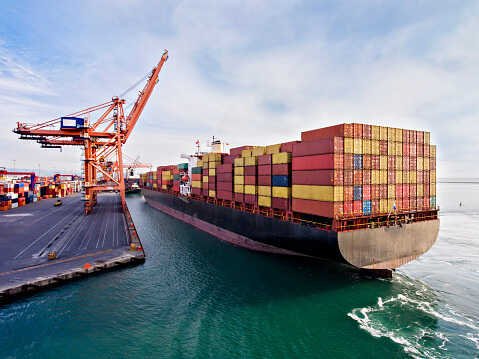Tracking the real-time Estimated Time of Arrival (ETA) of vessels heading to South Africa is essential for efficient supply chain management. Whether you’re an importer, exporter, or logistics professional, knowing how to track real-time vessel ETA to South Africa helps you plan operations, manage customer expectations, and avoid costly delays. This guide offers practical steps to monitor vessel ETAs accurately.
1. Obtain the Vessel Details
Gather Voyage Information
Collect key details about the vessel, including its name, International Maritime Organization (IMO) number, and voyage number. These identifiers are crucial for tracking. You can find this information on your bill of lading, shipping confirmation emails, or by contacting your freight forwarder, such as China Top Freight.
Note the Departure Port and Route
Identify the port of departure and the planned shipping route to South Africa. Understanding the journey helps you anticipate potential delays due to factors like port congestion or adverse weather along the way.
2. Use Carrier-Provided Tracking Tools
Access the Carrier’s Online Platform
Most shipping carriers offer dedicated online tracking platforms. Enter the vessel details (name, IMO number) into the platform’s search bar. You’ll typically see updates on the vessel’s current location, speed, and the latest ETA at South African ports like Durban or Cape Town.
Sign Up for Email or SMS Alerts
Take advantage of the carrier’s alert features. Subscribe to receive notifications via email or SMS when the vessel departs, reaches key waypoints, or experiences any significant changes to its ETA. This allows you to stay informed without constantly checking the platform.
3. Leverage Third-Party Tracking Services
Explore Tracking Aggregators
Websites and apps like MarineTraffic, VesselsValue, and 17TRACK aggregate data from multiple sources. Enter the vessel’s details to get a comprehensive view of its journey, including historical routes and real-time position on interactive maps. These services often provide additional insights, such as nearby vessels and port activity.
Check for API Integrations
If you manage a large volume of shipments, consider using tracking services that offer API (Application Programming Interface) integrations. This enables seamless data transfer into your internal systems, allowing for automated tracking and reporting.
4. Monitor Weather and Port Conditions
Follow Weather Forecasts
Weather can significantly impact a vessel’s ETA. Regularly check marine weather forecasts for the regions along the shipping route to South Africa. Tools like Windy.com or NOAA’s marine forecasts provide detailed wind, wave, and storm information. Anticipating rough weather helps you prepare for potential delays.
Stay Informed About Port Congestion
Port congestion is another common cause of ETA changes. Visit websites of South African ports (e.g., Durban Port Authority) or use services like Lloyd’s List Port Report to monitor congestion levels, berthing delays, and operational disruptions. Adjust your plans accordingly if you expect delays at the destination port.
5. Communicate with Stakeholders
Update Your Team
Share the vessel’s ETA information with your internal team, including warehouse staff, sales representatives, and customer service. Keeping everyone informed ensures smooth coordination of activities, such as scheduling unloading, inventory management, and customer notifications.
Inform Customers
If you’re shipping goods to clients in South Africa, proactively communicate the ETA. Provide regular updates, especially if there are any changes. Transparent communication builds trust and helps manage customer expectations effectively.
6. Analyze and Plan for Delays
Evaluate Deviations
If the vessel’s actual progress deviates from the initial ETA, analyze the cause. Is it due to mechanical issues, weather, or port congestion? Understanding the root cause helps you make informed decisions.
Develop Contingency Plans
Based on the analysis, create contingency plans. This could involve reallocating resources, arranging alternative transportation for urgent cargo, or adjusting production schedules. Having a backup plan minimizes the impact of delays on your supply chain.
In conclusion, learning how to track real-time vessel ETA to South Africa empowers you to manage your freight operations more effectively. By following these steps, using reliable tracking tools, and staying vigilant about external factors, you can ensure smoother logistics, reduce uncertainties, and keep your supply chain running efficiently. Whether you’re new to shipping or an experienced professional, these strategies will enhance your ability to anticipate and respond to vessel ETAs accurately.Utilize China Top Freight to help solve the problems you are facing. Contact us today to embark on your smooth transportation journey!


